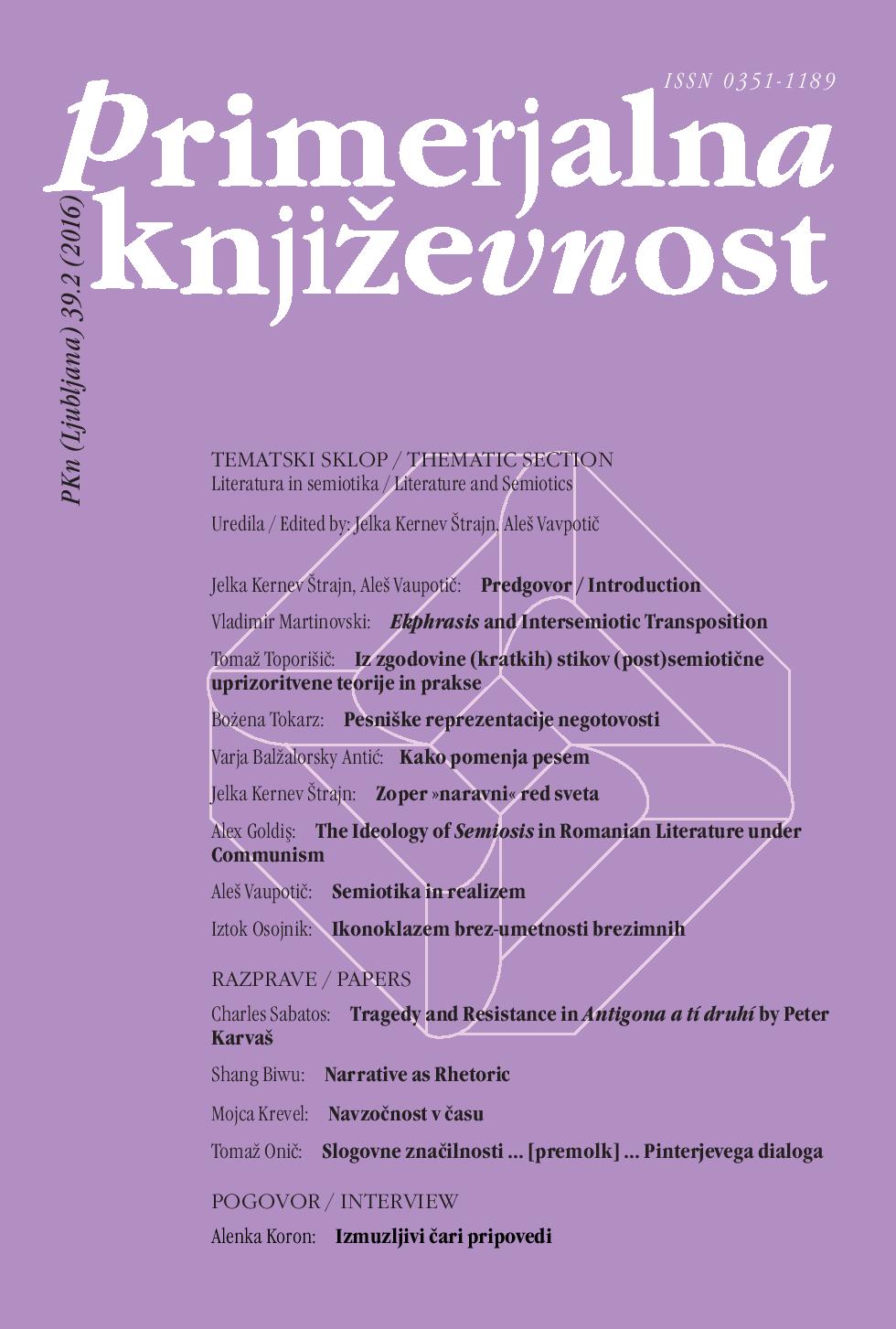Being in Time: Ozeki’s A Tale for the Time Being and the Postmodern Paradigm
Keywords:
American literature, American novel, postmodernity, Ozeki, Ruth, A Tale fort the Time Being, reality, hyperreality, hypertext, fractal subjectAbstract
The article analyses Ruth Ozeki’s 2013 novel A Tale for the Time Being from the perspective of the governing mechanisms of postmodernity. We argue that the structuring of its literary worlds and realities, literary subjectivities, as well as its organization implement the principles inherent in the structuring, functioning and perception of contemporary postmodern realities and individuals, while complying with the laws of the dominant digital medium. The correspondence of the structure and functioning of literary realities and subjectivities in the novel to postmodern principles is examined in terms of their agreement with the features the majority of theoreticians observe as paradigmatic of contemporary social, historical and cultural circumstances, i.e. non-linearity, intertextuality, polyvalence, decentralisation, and networked, rhizomatous structuring. For clarity’s sake, Baudrillard’s categories of hyperreality and fractal subject are used, as they anticipate all the stated qualities, and conceptually correspond to the dominant postmodern medium. – The analysis reveals that the construction of Ozeki’s literary realities is defined by the principles of equality, interference, connectivity, interchangeability and fluidity of all the involved worlds, which are established as hyperreal systems of media-generated information. Literary identities in the novel also correspond to the fractal nature of postmodern selves, as all the participants in the literary act are revealed as identity variants of the same subject. These variants are structured as networks of compatible mediated data, and exhibit the qualities of fluidity, interference and connectivity. As such, they corroborate the structural principles of hyperreality. Finally, the novel is examined from the perspective of the alterations the digital writing space instigates in the field of literary creation. The analysis reveals that the structuring of realities, identities and the plot in the novel, as well as the organisation of the text itself corroborate the modi operandi of the digital medium regardless of the medium in which the novel is read.References
Baudrillard, Jean. »Simulacra and Simulations«. Literary Theory: An Anthology. Ur. Julie Rivkin in Michael Ryan. Maiden, Oxford in Carlton: Blackwell Publishing, 2004. 365–377.
– – –. Impossible Exchange. London in New York: Verso, 2011.
Bolter, Jay D. Writing Space: Computers, Hypertext, and the Remediation of Print. Mahwah: Lawrence Erlbaum Associates, 2001.
Deleuze, Gilles, in Felix Guattari. »A Thousand Plateaus«. Literary Theory: An Anthology. Ur. Julie Rivkin in Michael Ryan. Maiden, Oxford in Carlton: Blackwell Publishing, 2004. 378–386.
Doyle, Jessica. »An Interview with Ruth Ozeki«. Splet. 23. december 2015.
»Food for Thought Festival History«. Splet. 23. december 2015.
Fowler, Edward. The Rhetoric of Confession. Shishōsetsu in Early Twentieth-Century Japanese Fiction. Berkeley, Los Angeles in Oxford: University of California Press, 1988.
»Change Swarm«. Splet. 23. december 2015. https://fopnews.wordpress.com/2013/04/05/change-swarm/.
Hawthorn, Jeremy. Studying the Novel. London: Arnold, 2001.
Hayles, N. Katherine. »Cognition Everywhere: The Rise of the Cognitive Unconscious and the Costs of Consciousness«. New Literary History 45.2 (2014): 199–220.
Johnston, John. Information Multiplicity: American Fiction in the Age of Media Saturation. Baltimore in London: The Johns Hopkins University Press, 1998.
Juvan, Marko. Literarna veda v rekonstrukciji. Ljubljana: Literarno-umetniško društvo Literatura, 2006.
Kittler, Friedrich. »Grammophone, Film, Typewriter«. October 41 (1987): 101–118.
Krevel, Mojca. Izvidniki v puščavi resničnosti: Avant-pop med kiberpankom in postmoderno. Ljubljana: Sophia, 2010.
Landow, George P. Hypertext 2.0. The Convergence of Contemporary Critical Theory and Technology. Baltimore in London: The Johns Hopkins University Press, 1997.
McHale, Brian. Constructing Postmodernism. New York: Routledge, 1992.
Ozeki, Ruth. A Tale for the Time Being. New York: Penguin Books, 2013.
– – –. All Over Creation. New York: Penguin Books, 2004.
– – –. My Year of Meats. New York: Penguin Books, 1999.
Pflug, Ursula. »Around the Gyre: Ruth Ozeki’s A Tale for the Time Being«. Splet. 23. december 2015.
Shannon, Claude E., in Warren Weaver. The Mathematical Theory of Communication. Urbana: University of Illinois Press, 1949.
Strehovec, Janez. Virtualni svetovi. K estetiki kibernetične umetnosti. Ljubljana: Znanstveno in publicistično središče, 1994.
Tabbi, Joseph. Postmodern Sublime: Technology and American Writing from Mailer to Cyberpunk. London: Cornell University Press, 1995.


